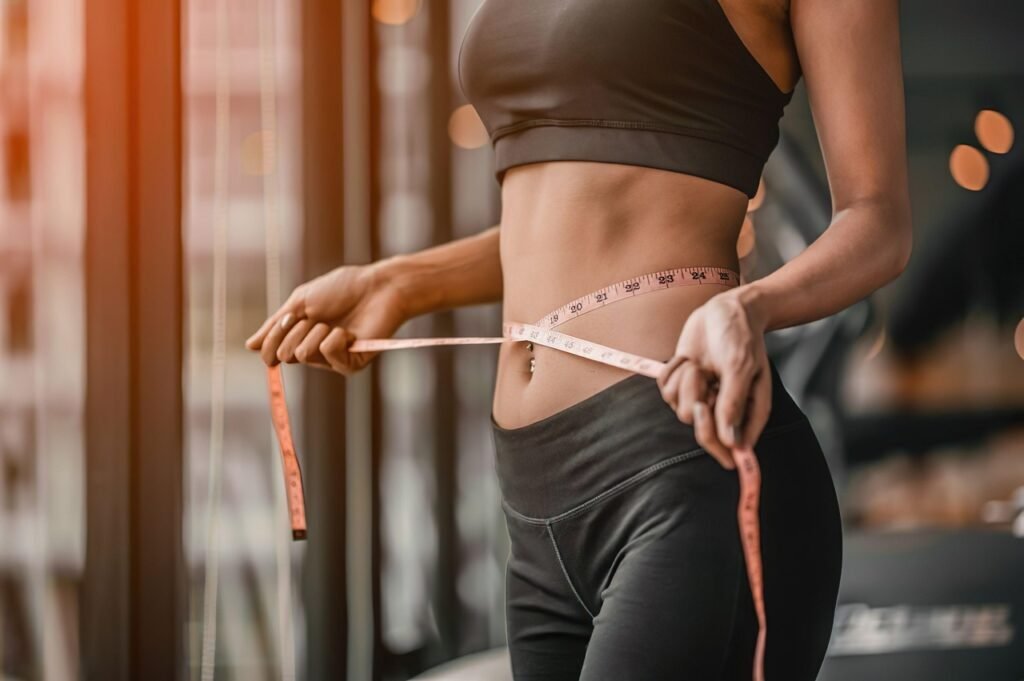The Ultimate Full-Body Workout Routine for Women: How to Create Yours

Introduction
A good workout should do more than just burn calories. It should build strength, boost confidence, and leave you feeling grounded and energized. For women looking to balance wellness with fitness, a full-body workout routine checks all the right boxes. It tones muscles, improves posture, and supports a healthy lifestyle. Whether you’re trying to get stronger, feel more confident, or move with ease in daily life, this guide walks you through how to build a full-body workout routine that works—no fancy gym or equipment required.
What Is a Full-Body Workout?
A full-body workout targets your entire body in one session—upper body, lower body, and core. Unlike split routines (which might focus on just legs or arms on a given day), full-body workouts hit all the major muscle groups at once. Think of it like meal-prepping your week: efficient, balanced, and saves time. These workouts often include compound movements—exercises like squats, push-ups, and deadlifts—that engage multiple muscles at the same time. The goal is to strengthen, tone, and boost endurance in a well-rounded way. For women juggling work, wellness, and everything in between, it’s a smart, streamlined solution.
Benefits of Full-Body Workouts for Women
Full-body workouts are a powerhouse of benefits. First, they’re time-efficient. With just 30 to 45 minutes, you can activate all major muscle groups and get your heart rate up. That means better results with fewer sessions per week.
They also help build lean muscle mass, which increases your resting metabolism—so your body burns more calories even when you’re not exercising. That’s a big win for weight management.
Beyond fat loss, full-body workouts improve posture, enhance joint health, and build functional strength—the kind you use in real life, like lifting groceries or chasing your kids.
They’re also great for consistency. Because they hit every part of the body, missing a session doesn’t mean you skipped a key area. That balance supports long-term wellness and helps prevent burnout.
Mentally, full-body workouts can boost mood and confidence, releasing endorphins that lower stress and help you feel good in your skin.
How to Build Your Full-Body Workout Routine
1 Set Your Fitness Goals
Before jumping into exercises, know what you want out of your routine. Different goals will shape how you train:
- Fat loss: Focus on higher reps, lighter weights, and cardio-based circuits.
- Muscle tone: Mix strength moves with shorter rest to keep intensity high.
- Strength building: Use heavier weights and fewer reps with more rest between sets.
- Functional fitness: Combine strength, balance, and flexibility for everyday movement strength.
Understanding your goal sets the direction and helps you measure progress in a way that actually matters.
2 Choose the Right Exercises
A full-body dumbbell workout or bodyweight circuit should always include moves for upper body, lower body, core, and cardio.
- Upper Body: Push-ups, dumbbell rows, shoulder presses strengthen arms, shoulders, and back.
- Lower Body: Squats, lunges, and deadlifts build strong glutes, thighs, and hamstrings.
- Core: Planks, Russian twists, and leg raises stabilize your trunk and improve balance.
- Cardio Add-Ons: Jump rope, burpees, and HIIT intervals boost heart health and fat burn.
You don’t need fancy moves. Stick with basics done well, and you’ll see results.
3 Balance Frequency and Recovery
Three to four full-body sessions per week is a solid starting point. That gives you time to work hard, recover well, and avoid overtraining.
Rest days are just as important. They’re when your muscles repair and grow stronger. Active recovery like yoga, walking, or stretching can keep you moving without pushing too hard.
4 Keep It Time-Efficient
Don’t have an hour? You don’t need one. Here’s how to stay on track with 30-minute workouts:
- Circuit Style: Rotate through 5–7 exercises with minimal rest.
- Supersets: Pair two exercises (like squats and shoulder presses) back-to-back.
- Compound Moves: Favor exercises that work multiple muscles at once.
Sample Circuit:
- Squats – 15 reps
- Push-ups – 10 reps
- Dumbbell rows – 12 reps
- Jump rope – 30 seconds
- Russian twists – 20 reps (10 each side)
Repeat 3–4 rounds.
5 Adjust for Your Fitness Level
Beginners should start slow, focusing on form over speed. If you’re recovering from injury or new to movement, explore low-impact workouts that are joint-friendly and supportive.
Intermediates can increase intensity with more reps, added weight, or faster transitions.
Listen to your body. Progress is personal, and consistency always beats perfection.
Best Weekly Full-Body Workout Plan (Sample Template)
Designing your week around full-body workouts gives you structure without complexity. Here’s a complete 7-day sample plan that balances strength, cardio, and recovery. It’s tailored to work from home with minimal equipment—and built to keep you feeling strong, energized, and motivated.
Day 1: Total Body Strength + Core
- Bodyweight squats – 3 sets of 15 reps
- Push-ups (on knees or full) – 3 sets of 10 reps
- Dumbbell shoulder press – 3 sets of 12 reps
- Plank hold – 3 sets of 30 seconds
- Optional: 20-minute brisk walk or yoga
This day sets the tone—focus on full-body moves that wake up your muscles and fire up your core.
Day 2: Active Recovery
- Light walk (30 mins)
- Gentle yoga or stretching session (15–20 mins)
Recovery doesn’t mean doing nothing. Movement promotes circulation and muscle recovery.
Day 3: Cardio + Core Boost
- Jump rope – 3 rounds of 1 min
- Alternating lunges – 3 sets of 12 reps per leg
- Russian twists – 3 sets of 20 reps (10 each side)
- Mountain climbers – 3 rounds of 30 seconds
- Cool-down: 5-minute stretch
Add music or a timer app to keep your energy high and your pace steady.
Day 4: Strength Circuit (Dumbbells or Bodyweight)
- Deadlifts (dumbbells or kettlebell) – 3 sets of 12
- Dumbbell bent-over rows – 3 sets of 15
- Step-ups (use a sturdy chair) – 3 sets of 12 per leg
- Burpees – 3 sets of 10
- Side plank – 3 sets of 20 seconds per side
Challenge your whole body with controlled strength work and a little heart-pumping cardio at the end.
Day 5: Optional Light Movement or At-Home Fitness
If you’re feeling tired, rest. If you’ve got energy, enjoy a walk, dance, or a low-impact workout.
Day 6: Strength + Core Focus
- Goblet squats (hold one dumbbell) – 3 sets of 15
- Incline push-ups (hands on a chair or bench) – 3 sets of 12
- Dumbbell chest press (floor or bench) – 3 sets of 12
- Bicycle crunches – 3 sets of 20 reps
This is a great day to test your form and lift slightly heavier if you feel ready.
Day 7: Full Rest or Recovery Yoga
- Rest completely or do 20–30 minutes of restorative yoga or foam rolling.
Taking time to rest is just as important as your workouts. Your body needs it to rebuild and stay injury-free.
Weekly Tips:
- Warm up every session with 5 minutes of light cardio and dynamic stretching.
- End with a cool-down and deep breathing.
- Hydrate throughout the day and eat well to support performance.
Stick to this plan, and you’ll feel stronger, more energized, and more capable—inside and out.
Tips for Staying Consistent and Motivated
1 Set Short-Term Milestones
Big goals can feel overwhelming. Set small ones: complete 3 workouts this week, or hold a plank for 10 more seconds.
2 Track Progress (Without the Scale)
Track how many reps you did, how strong you felt, or how long you stuck with a routine. That’s real progress.
3 Mix It Up to Avoid Boredom
Rotate exercises every few weeks to keep things fresh and challenge new muscles.
4 Use Music, Apps, or Workout Buddies
A great playlist or fitness app can make your session fly by. Working out with a friend can keep you accountable and make it fun.
How Nutrition Supports Full-Body Training
Your body needs more than movement to thrive. What you eat before, during, and after your workouts plays a major role in how strong, energized, and recovered you feel. Nutrition is the silent partner to every squat, press, and plank.
Pre-Workout Nutrition: Fuel Up
Before you move, you need energy. The goal is to give your muscles and brain the fuel to perform at their best without feeling too full. A light meal or snack 1–2 hours before training works best.
Choose simple carbs for quick energy and pair them with protein for muscle prep:
- A banana with almond butter
- Greek yogurt with berries
- A slice of whole-grain toast with scrambled eggs
- Oatmeal topped with chia seeds and honey
Avoid heavy fats and high-fiber foods right before training as they can slow digestion and leave you sluggish.
During Your Workout: Hydrate and Support
Water is your best workout buddy. Even slight dehydration can zap your endurance, coordination, and focus. Sip throughout your session—especially if you’re sweating hard.
For workouts over 60 minutes or intense HIIT sessions, add electrolytes or sip on a diluted sports drink to replenish sodium, potassium, and fluids.
Post-Workout Recovery: Rebuild and Recharge
What you eat after your session is crucial. Your body is in rebuild mode, needing protein to repair muscle tissue and carbohydrates to restock energy reserves.
Aim to eat within 30–60 minutes post-workout:
- Protein smoothie with berries and nut butter
- Grilled chicken with roasted sweet potatoes
- Eggs with avocado and whole grain toast
- Quinoa bowl with veggies and tofu
This is also a great time to rehydrate and include antioxidant-rich foods like leafy greens or berries to reduce inflammation.
All-Day Nutrition: Eat to Support, Not Restrict
Eating well isn’t just about what happens around workouts. To feel strong, lean, and energized consistently, you need balanced meals throughout the day:
- Lean proteins like beans, fish, eggs, or tempeh
- Healthy fats like nuts, seeds, olive oil, and avocado
- Complex carbs such as brown rice, oats, or sweet potatoes
- Colorful vegetables for vitamins, minerals, and fiber
Don’t skip meals or overly restrict calories—your body needs fuel to function, especially if you’re training multiple times a week.
Smart Snacking: Energy Without the Crash
Well-chosen snacks can bridge energy gaps between meals and help you avoid late-night cravings:
- Apple slices with peanut butter
- Cottage cheese with pineapple
- Hummus with baby carrots
- A boiled egg and a handful of trail mix
Pair protein with a carb or healthy fat to keep you full longer.
Hydration: A Daily Essential
Beyond workouts, water keeps everything in your body running smoothly—from digestion to circulation to skin glow. Aim for 8–10 cups of water per day, more if you’re sweating heavily. Herbal teas and water-rich fruits like watermelon and cucumber also help.
In short, nutrition doesn’t have to be rigid. Listen to your body. Stay hydrated. Prioritize whole, nourishing foods—and you’ll feel the difference in every rep, set, and sprint.
Common Mistakes to Avoid
1 Skipping Recovery
You need rest to grow stronger. Don’t push through pain—honor your rest days.
2 Ignoring Form
Sloppy reps don’t count. Watch your posture, and slow down when needed.
3 Doing Too Much Cardio
Cardio is great, but too much can lead to muscle loss. Balance it with strength training.
4 Not Tracking Progress
Without a log or plan, it’s easy to plateau. Keep a notebook or app to stay on track.
Equipment to Consider (Optional but Helpful)
You can do full-body workouts with zero gear, but a few tools can level up your routine:
- Resistance Bands: Lightweight, versatile, and great for toning arms, glutes, and legs.
- Dumbbells: Essential for a solid full body dumbbell workout. Start with 5–10 lb sets.
- Yoga Mat: Keeps you stable and cushioned during floor exercises.
- Kettlebell: Adds variety and intensity, especially for swings and squats.
These are affordable, compact, and easy to store—perfect for home use.
Start simple. Add tools as you grow more confident and committed.
When to Seek a Trainer or Program
If you feel stuck, bored, or unsure, it might be time to call in a pro. A trainer can correct your form, push your limits safely, and tailor workouts to your unique needs—especially if you’re postpartum, dealing with chronic pain, or looking to break through a plateau.
You don’t have to go it alone. Online programs, group classes, and fitness apps also offer structure when motivation dips or goals shift.
Frequently Asked Questions
1 Can I do full-body workouts every day? Not recommended. Your muscles need rest to repair and grow. Aim for 3–4 days a week.
2 How long until I see results? With consistency, you may feel changes in 2 weeks and see them in 4–6 weeks.
3 Are full-body workouts good for weight loss? Yes! They burn calories, build muscle, and boost metabolism—a triple win for fat loss.
4 What if I don’t have equipment? Bodyweight exercises work just fine. Push-ups, squats, and planks are powerful on their own.
5 Can I build muscle without getting bulky? Absolutely. Women have lower testosterone levels, so muscle tone improves without bulk.
Final Word: A full-body workout doesn’t just change how you look—it transforms how you feel. Strong. Balanced. Energized. And in control of your wellness, one workout at a time.


